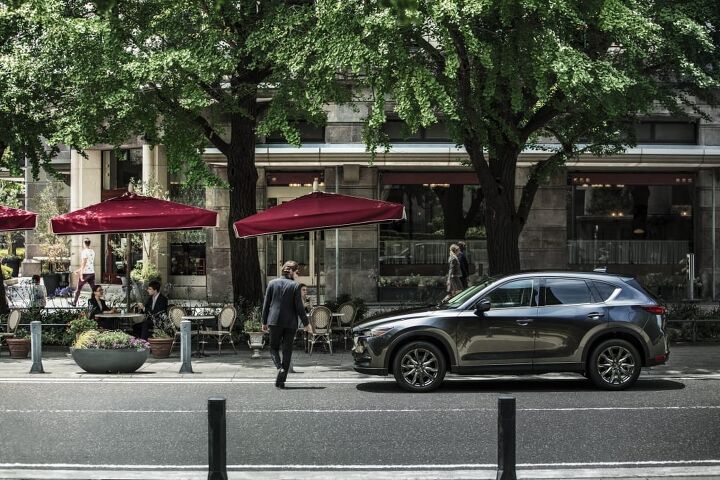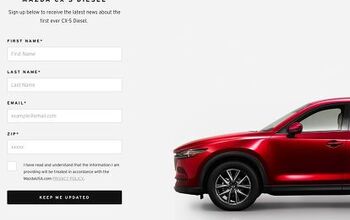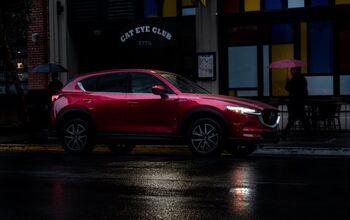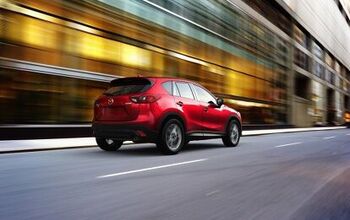The Mazda CX-5 Diesel's Economic Case Is Nonexistent
Finally.
Mazda’s promised diesel-powered CX-5 is now open for pre-order in the United States, years after we began chronicling the Skyactiv-D’s lethargic march to North America.
TTAC’s coverage of Mazda diesel delays goes back nearly six years, when the future of Mazda’s Skyactiv-D was linked to a future Mazda 6. It was a story that received more attention in 2014. Eventually, in late 2016, there was confirmation of a Mazda CX-5 diesel. Arrival date: second half of 2017.
By the second half of 2017, however, the timing of the diesel CX-5’s arrival was unknown. Fast forward past a promising NHTSA filing, then a CARB certification, and then the release of EPA fuel economy ratings to the 2019 New York International Auto Show.
The Mazda CX-5 Signature AWD Diesel is ready, Mazda insists. But at $42,045, there’s simply no reason for its existence in America.
Granted, it’s not the first time a vehicle’s diesel engine option required a hefty financial burden. Generally, automakers would demand greater financial outlay, but owners were reimbursed with a significant torque advantage and meaningful fuel savings.
The Mazda CX-5’s Signature line – heretofore available exclusively as an all-wheel-drive model with the 2.5-liter turbo seen first in the larger CX-9 – will conduct itself in a different manner. There’s a huge horsepower deficit, a quantifiable torque disadvantage, and a modest fuel economy benefit. Factor in the extra cost of diesel fuel and the potential cost savings at the pump dwindle further.
Here’s the simple math.
With 250 horsepower (220 on regular fuel) and 310 lb-ft of torque, the current Mazda CX-5 Signature is priced at $37,935, destination included. You’ll need to find another $4,110 to select the 2.2-liter diesel, which produces 82 fewer ponies and 20 fewer lb-ft of torque. In both cases, max. torque is achieved at 2,000 rpm.
The CX-5 Skyactiv-D will use less fuel than the Skyactiv-G 2.5T, but the official ratings are hardly soul-stirring. The diesel’s 28 mpg combined fuel economy rating is only 4 mpg better than that of the 2.5T.
Over the course of 10,000 miles, the diesel CX-5 will consume 357 gallons of fuel. According to AAA’s current national average diesel price of $3.08, the CX-5’s annual diesel cost will be $1,100.
The gas-fired CX-5 2.5T will require 417 gallons of fuel over the course of a 10,000-mile year. The average price of regular fuel, $2.84/gallon, produces an annual cost of $1,183; or $1,417 on $3.40/gallon premium fuel if you want to maximize CX-5 2.5T horsepower.
Assuming, improbably, no extra interest charges accompanying the $4,110 Skyactiv-D upcharge, the diesel costs $822 extra per year over the course of a 5-year payment plan. (Throw in around $60 extra for added interest costs at 2.9 percent, if you’d like.)
With $83 of annual fuel savings, it’ll take 49.5 years to recoup the Skyactiv-D’s upfront costs; 13 years at best.
Diesel fanatics aren’t unfamiliar with vaguely similar payback timelines. In the past, however, there were torque considerations to be, well, considered. There were resale value equations to calculate. But in the case of the Skyactiv-D, the diesel-like mid-range umph of the 2.5T squashes the torque argument, while the harm done to diesel’s reputation by Volkswagen’s TDI emissions scandal does little to bolster any residual value assertion.
Sometimes, good things come to those who wait.
Not this time.
At one point, Mazda suggested 10 percent of CX-5 shoppers would choose diesel, a figure that now does not seem remotely believable. Maybe the diesel Mazda 6 will tell a different tale?
[Images: Mazda]
Timothy Cain is a contributing analyst at The Truth About Cars and Driving.ca and the founder and former editor of GoodCarBadCar.net. Follow on Twitter @timcaincars and Instagram.
More by Timothy Cain
Latest Car Reviews
Read moreLatest Product Reviews
Read moreRecent Comments
- Ltcmgm78 Just what we need to do: add more EVs that require a charging station! We own a Volt. We charge at home. We bought the Volt off-lease. We're retired and can do all our daily errands without burning any gasoline. For us this works, but we no longer have a work commute.
- Michael S6 Given the choice between the Hornet R/T and the Alfa, I'd pick an Uber.
- Michael S6 Nissan seems to be doing well at the low end of the market with their small cars and cuv. Competitiveness evaporates as you move up to larger size cars and suvs.
- Cprescott As long as they infest their products with CVT's, there is no reason to buy their products. Nissan's execution of CVT's is lackluster on a good day - not dependable and bad in experience of use. The brand has become like Mitsubishi - will sell to anyone with a pulse to get financed.
- Lorenzo I'd like to believe, I want to believe, having had good FoMoCo vehicles - my aunt's old 1956 Fairlane, 1963 Falcon, 1968 Montego - but if Jim Farley is saying it, I can't believe it. It's been said that he goes with whatever the last person he talked to suggested. That's not the kind of guy you want running a $180 billion dollar company.




































Comments
Join the conversation
What's the point of diesel in the passenger car? Turbocharged engine has all the torque advantage you need without complications and problems of diesel engine. And if thats not enough - get EV with all its torque from zero rpm. Diesel is better suited for commercial use.
The time to release a diesel CX-5 was back when diesels weren't quite as restricted and could easily hit 40mpg in a car this size.